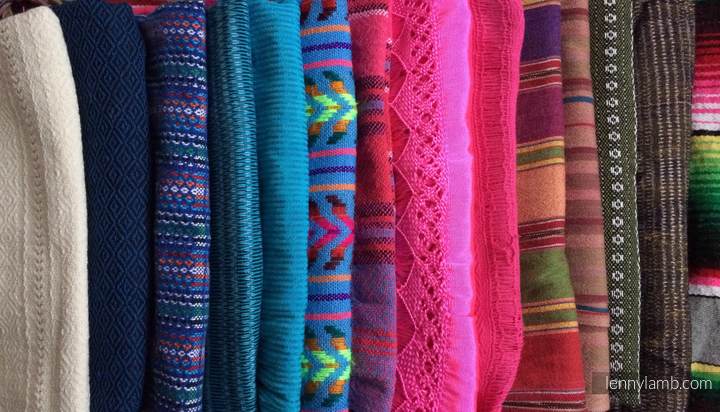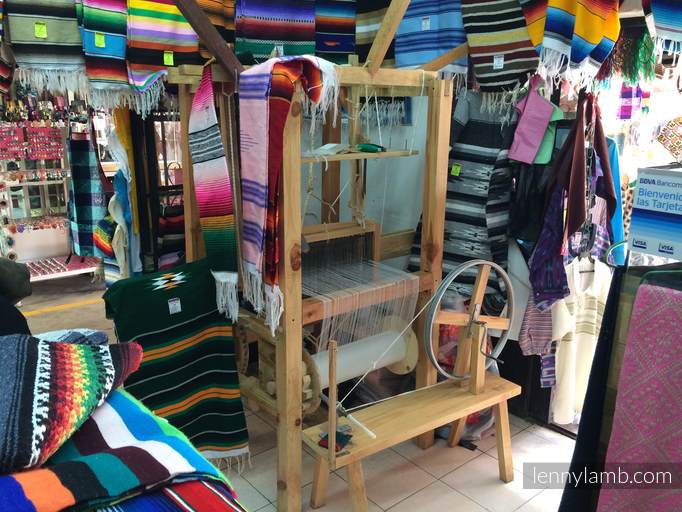



Oh, that Latino atmosphere... sometimes your attention may be attracted by a parent, who carries a baby on a hip in a multi-color scarf, which ends are not dragged on the ground. It may be boldly assumed that the parent wears a rebozo. The rebozo, which originates from Latin America, is 60 centimeters wide, two meters long or more, the edges are not hemmed. The scarf has been the quintessence of the Mexican women wardrobe. Due to the multitude of application, the rebozo has enjoyed a leading position among other garments.
Now, a gulp of history. Conquistadors were stunned by the quality as well as the diversity of fabrics, which were made on the primitive looms by the indigenous woman from Latin America. With the advent of Christianity and the implementation of a regulation to cover the head with a scarf during a service, the self-made scarves gained a new purpose. The rebozo was given the name from the verb “rebosar”, which means “to cover”. The first weavers’ workshops were set up in Mexico in the XVI century, many of them exist to this day.

The contemporary rebozos are available in different sizes and various threads, ranging from expensive silk and cotton to synthetic fabrics. Some of them are produced only for the warmer months and have a loose weave, whereby they are more delicate and also more colorful. In turn, the winter rebozos have a thick weave. They also tend to be bigger and have some wool. The elegant rebozos, which are manufactured the whole year, are made of silk. They reach exorbitant prices also because of the manufacturing time - several or even several dozen weeks. The other problem is fringe weaving. The robozo is sometimes weaved in one place and the fringes are in other places. Some specialist are able to define in which region, well - even by which family! - the fringes were produced.
Nowadays, we may observe the increased tendency to bring back the rebozo the rightful place, as a national symbol. Over the years, the scarf was considered as an attribute of the impoverished and rural population. Indeed, the rebozos are not only used as a covering but also have more practical usage - as a material for moving goods, carrying babies or as a hammock. The ornamental function has been brought back. The examples of the painter Frida Kahlo, who did not leave her house without the rebozo on her shoulders, or the contemporary singer - Lily Downs, who wears the rebozo on each concert, are prised. Some actions have been taken to make the rebozo the national symbol again. The view of a Mexican mother carrying her baby in a rebozo, not in the popular in that country fleece blanket, is what gives me pleasure. Mexican mothers do not knot the rebozo, they just tuck it under the baby’s bottom. Do not do this at home, this is a multigenerational tradition and is taught at home. The traditional Mexican midwives used the rebozo to massage their patients - during pregnancy, during and after giving birth. The secret of the rebozo massage consists in tucking in a scarf and rhythmical swinging, that is why both women and babies enjoy it so much. The women who are delivering the baby with the aid of this scarf may massage themselves, swing their hips or overhang on it during the bearing downstage. Ability to apply this scarf has spread worldwide. Midwives, doulas, and parent are massaging. The first manual on the Rebozo massage was released, also translated into Polish.
Rebozo- the miracle scarf - its wide range of applications, from massage during pregnancy, through the working material during giving birth to soothing material after the labor. Worn as a protection from cold, as a skirt during pregnancy, as a belt used to support a belly or as a headwear. Moreover, you can swing your baby in it and use it as a short sling to carry your toddler on the hip. Anyway, it may serve as an ornament for each woman. The variety of sizes, colors, and patterns of the rebozo arises admiration for the hands which weaved it.
Małgorzata Sikora-Borecka